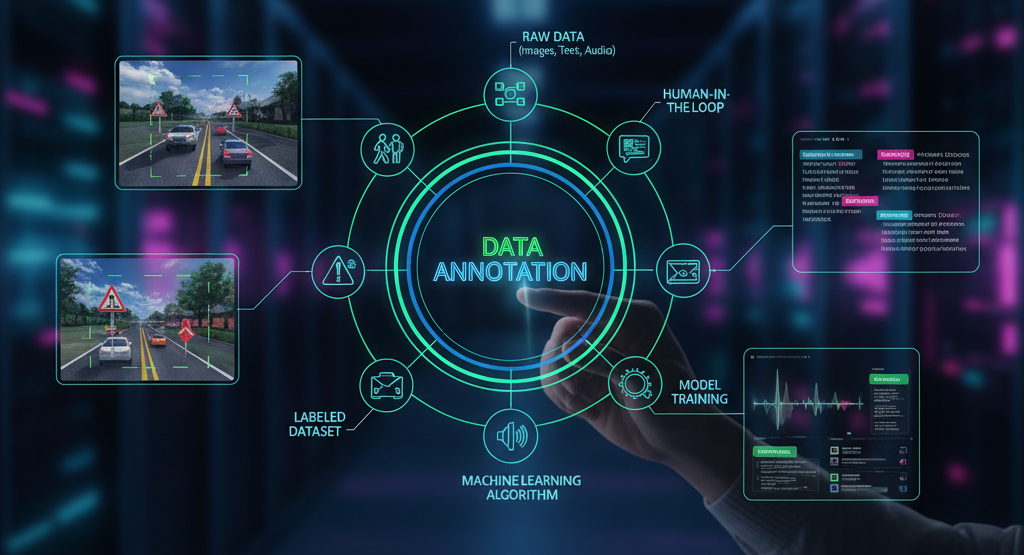Artificial Intelligence (AI) is transforming the nature of our work, communication, and decision-making. Yet in the background of any intelligent AI, there is one major component- data annotation. In its absence, even the most sophisticated AI algorithms would find it difficult to comprehend or make the right prediction.
But what is data annotation, and what is so significant about it? Let’s explore.
What Is Data Annotation?
Data annotation refers to labelling data in order to be understood by the machines. Imagine that it teaches a child to identify things. You take a picture of a cat and tell me, this is a cat. With time, the child is able to distinguish cats independently. Similarly, AI models are trained to be able to identify patterns based on labeled data.
Annotation may be in the form of images, text, audio or video. For example:
- In image annotation, images are labeled with items, such as cars, people or traffic lights.
- In text annotation, the words or phrases are denoted meaning or emotion.
- In audio annotation, the sounds are recognized, e.g. utterances or noises.
These labels enable the AI systems to know what they are seeing or hearing and therefore they are made smarter by the data they have.
Reasons It is Important to AI Accuracy.
The AI models learn data in the same manner as human beings learn through experiences. In case of messy or unclear data, the predictions of the model are inaccurate. The solution to this problem is through the use of data annotation to obtain clean, structured, and meaningful data to use in training.
To illustrate, in self-driving vehicles, image annotation helps to teach the system how to identify the stop signs and pedestrians. Annotated data assists AI in detecting illnesses in medical scans in the case of healthcare. The closer the labeling, the more superior the model works.
Types of Data Annotation
The following are some of the common types that are applied in AI development:
- Image Annotation: The process of marking objects or regions in an image.
- Text Annotation: Underlining words, phrases or feelings.
- Audio Annotation: Writing out or labeling of sound clips.
- Video Annotation: This is to recognize and follow objects through frames.
All types are useful in training AI differently, based on the application.
The Human Element in Training AI.
Although AI is all about machines learning, the role of human beings in teaching machines is rather large. Data is checked and verified by annotators to ensure that it is labeled. This is the human contribution, that makes the machine learn the correct examples. AI may commit very significant mistakes without proper annotation, such as it may misidentify an object or it may fail to comprehend a sentence.
The difficulties with Data Annotation.
Annotating data may take time and needs to be careful of minute details. The huge AI projects require thousands or even millions of examples that have labels. It is also a matter of expertise to make sure the consistency and accuracy. The other difficulty is the issue of bias management an in case the data is not diverse, the AI can be trained to recognize biased or unjust trends.
The Future of Data Annotation.
The higher the quality of annotated data is, the higher the need of such an information will be with the further development of AI systems. Tools and automation techniques are assisting in accelerating the process, yet there will always be human involvement to keep the process accurate.
Final Thoughts
An annotation of data may be viewed as a side activity, yet it is the core of any trustworthy AI model. It provides machines with the background in which to understand the world. With further developments of AI, quality data annotation is going to continue playing the role of connecting the raw data and intelligent decisions.

